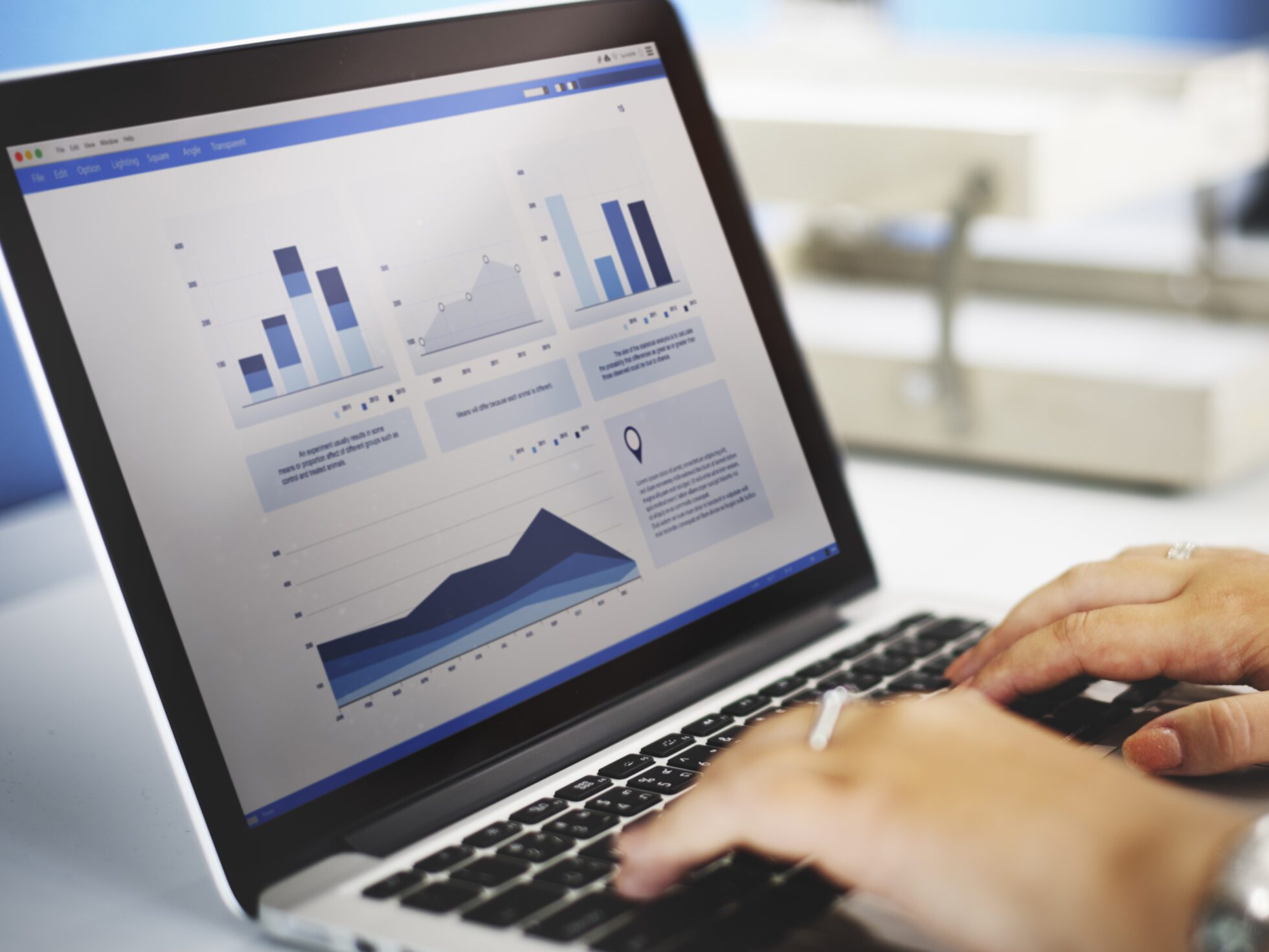You shouldn’t adopt automated sales reporting just because it’s the future. Nor should you adopt it because the old method is outdated. Automated sales reporting is the only logical choice if you’re still interested in running a profitable business in 2024 and beyond.
Stick with us and we’ll show you why. We’ll also show you how it works, and one BIG secret that businesses are sleeping on…
What is Automated Sales Reporting?

Automated sales reporting is a way of utilizing technology to streamline the process of collecting and analyzing sales data.
When you automate the generation and analysis of sales information, you save you and your colleagues a whole lotta time, you increase your team’s efficiency, and you improve the accuracy of your data.
In essence, you enhance everything about your sales data, but you get it in a fraction of the time and without expending much (if any) effort.
With automated sales reporting, you’ll be able to mine for deeper insights into your sales performance, improve the entire sales funnel, and make informed business decisions that will eventually lead to higher revenue and more profit. Can’t be a bad thing, right?
Here’s a quick breakdown of the key aspects of automated sales reporting.
- Data collection. There are various metrics that can be collected swiftly and automatically without you lifting a finger. From sales volume to revenue, customer acquisition costs to conversion rates, various data can be pulled from a number of sources, including sales transactions, customer interactions, leads, conversions, and more.
- Data analysis. Once collected, the automated system analyzes the data using predefined algorithms or customizable parameters. This type of analysis can help you identify trends, patterns, correlations, or even KPIs (key performance indicators).
- Report generation. Your automated sales reporting tool of choice will often feature some kind of dashboard where you can see the visual representation of your sales data. This can be in the form of graphs, charts, or tables that offer insight into customer behavior, market trends, and more.

So now we’ve covered the basic benefits of automated sales reporting, what can you actually do to get started? Is it complicated to set up? What tools can you use to make your life easier?
How to Automate Your Sales Reporting
Automating your sales data generation and analysis all starts with a CRM (Customer Relationship Management) system or some other form of dedicated sales reporting tool that suits your business best. CRMs are the most popular, and there are plenty to choose from.
1. Choose Your CRM

A CRM system is designed to centralize and organize customer data, interactions, leads, sales activities, and marketing efforts in one place.
From HubSpot to Zoho, Salesforce to Pipedrive, CRM systems are a dime a dozen. The four just mentioned are some of the most well-known and respected CRM platforms. They might be where you look first in your search for a solid CRM, but they’re far from the only options.
2. Define Key Metrics and Objectives
Once you’ve got your CRM, you should determine the specific metrics and KPIs that align with your business goals. What data should you be tracking? Identify the data points that are crucial for assessing sales performance, such as revenue, conversion rates, customer acquisition costs. Once you have this ready, it’s time to integrate…
3. Integrate Data Sources

The great thing about CRMs is that you can integrate other apps with them so the data gets sent automatically to your CRM of choice. Hence automated sales reporting. By identifying the data points you want to track, you can now go to the source of this data and integrate it with your CRM.
We’ll go into more detail about CRM video integration later, but a good example of this is to integrate your online meeting recorder with your chosen CRM so that your sales calls, their transcripts, any notes you’ve made, and even AI generated summaries are sent directly to your CRM and stored in an easy-to-find location. With tl;dv, you can even cut your full meetings down into clips or even highlight reels. These can also be integrated directly with your CRM of choice.
4. Automate Data Collection
Depending on your CRM, you may have to configure it to automatically acquire customer data from your chosen data points. This could include automatic data syncing, scheduled imports, or real-time data feeds. You can also customize your dashboards to be shown the data you want. Once this is up and running, you can sit back and watch your data flow.
Other Tips
This is good enough to get going with automated sales reporting, however, there are more things you can do too. Check these out:
- Data cleaning: Download tools that can clean your data, ensuring there are no duplicates and that everything is accurate and consistent.
- Scheduled reporting: Most CRMs enable you to automatically deliver reports to stakeholders’ email inboxes or within the CRM platform at predefined intervals (daily, weekly, monthly). This ensures that decision-makers have access to up-to-date information regularly.
- Make use of visualization tools: Quickly interpret and analyze sales trends by setting up your dashboard to show you graphs, tables, and charts. This makes it much easier to see the data you’re collecting at a glance.
- Set up alerts and notifications: When certain predefined thresholds are met, your CRM can notify teams or individuals prompting them to respond and make necessary changes.

What Tools Should I Integrate With a CRM?
CRMs are great because you can get real-time data from multiple sources in one place. It becomes a centralized source of truth for your entire company. Not only that, but it’s often displayed in a way that’s easy on the way.
The question now is which tools should you integrate with your CRM? Where do you want to collect data from? Really, it depends on your business model and which tools you actually use.
If you’re already using sales software like Apollo or LeadIQ, they should be one of the first softwares to link to your CRM. Any marketing automation platforms you’re utilizing are also no-brainers. If you’re using Marketo or HubSpot, then these are ideal for syncing marketing-related data such as campaign performance, lead interactions, and customer behavior.
Similarly, integrating customer support platforms like Zendesk, Freshdesk, or Help Scout with CRM systems enables the collection and synchronization of customer service data. This includes tickets, inquiries, and issue resolutions, and provides a comprehensive view of customer interactions.
It also ensures your customer success team is on the same page as all your other teams… Just ask Ian about the nightmares unsynced teams can have.
@tldv.io Another day at another tech company #tech #startup #corporatehumor #product #sales #cs #dev
♬ original sound - tldv.io - AI Meeting Recorder
Of course, you also have E-commerce platforms like Shopify and its alternatives, which are perfect for dropshipping, social media management tools like Hootsuite, and any embedded analytics software like Google Analytics. Don’t forget to integrate your email marketing software too, or any survey or customer feedback softwares you use.
Basically, everything and anything that involves the customer can be integrated with your CRM to give you more accurate data on your customers.
But there’s one big one we’ve not mentioned yet… It’s not quite as popular as those listed above, but the ramifications of using it put it on a par with any other integration, if not on a pedestal before them all: call recordings.

CRM Video Integration
By integrating video clips with your CRM, you’re doing yourself two massive favors. Not only does it help you understand your sales data more clearly, it also improves internal communication through video calls and meetings. Whether you’re integrating footage of an actual sales call with a prospect and placing it alongside their customer information in your CRM, or you’re uploading a conversation from the sales team about the direction you’re going to go with your new strategy, the CRM will house it and you can use it to enrich all your other data insights.
Sharing a recorded sales call (or user research call, or even customer support call) to your CRM enables teams to review discussions, decisions, and action points at their convenience. This fosters better collaboration by ensuring that everyone is on the same page, even if they couldn’t attend the meeting in real-time. This is great for asynchronous teams that work remotely from different time zones.
In addition to the benefits outlined above, CRM video integration also enables colleagues to refresh their memory of certain meetings. Whether they’re preparing for a follow-up pitch with a client and need to rehash the prospect’s pain points, or they’re just catching up on the internal meetings, video footage is the best and quickest way to do this.
New employees can obviously benefit from watching real-life examples of sales calls in their training period, too. It’s a great way to onboard new staff members: send them directly to the highlights that cover all relevant bases of the business.
tl;dv: The Ultimate Call Recorder
It’s all well and good talking about CRM video integration, but you need to actually have the videos to integrate first. That’s where tl;dv comes in. It records and transcribes any meeting you want it to, completely free of charge. You read that right. Unlimited free call recordings and transcripts.

To get 5,000+ integrations, including all your favorite CRMs, as well as the ability to convert clips into reels, upload and download files, embed clips and recordings into Notion and other UX research repositories, and much much more, you’ll need to upgrade to the Pro plan. This will set you back just $20 per recording user per month.
The idea is simple: tl;dv joins your meeting as a bot (even mobile meetings if you schedule them in advance) and records the entire thing. It transcribes the conversation with its state of the art voice recognition, meaning the transcript will accurately convey who said what throughout the entire conversation, even with many speakers.
You have tons of features at your disposal, too. From making timestamps (which can immediately be sent to colleagues via email, Slack, Notion, and more), to AI generated notes and summaries. You can even search your tl;dv library with ease to find the exact moment/s you’re looking for. Just type in a keyword and your library will only show specific points in recordings that feature that keyword in the transcript.
If you wanted, you could even mash them all together, creating a highlight reel of specific issues reported in customer support calls, or objections in sales pitches. This will help you analyze and evaluate such cases far more easily.
Get Started With Automated Sales Reporting Today!
CRM video integrations are just a part of the puzzle. Automated sales reporting is a multi-faceted technique that streamlines your work processes and makes it less time consuming and more efficient to track and analyze sales data. By using tl;dv, you can integrate video footage directly to your CRM and boost your potential revenue even more!
Download tl;dv for Zoom, Google Meet, and MS Teams today!





